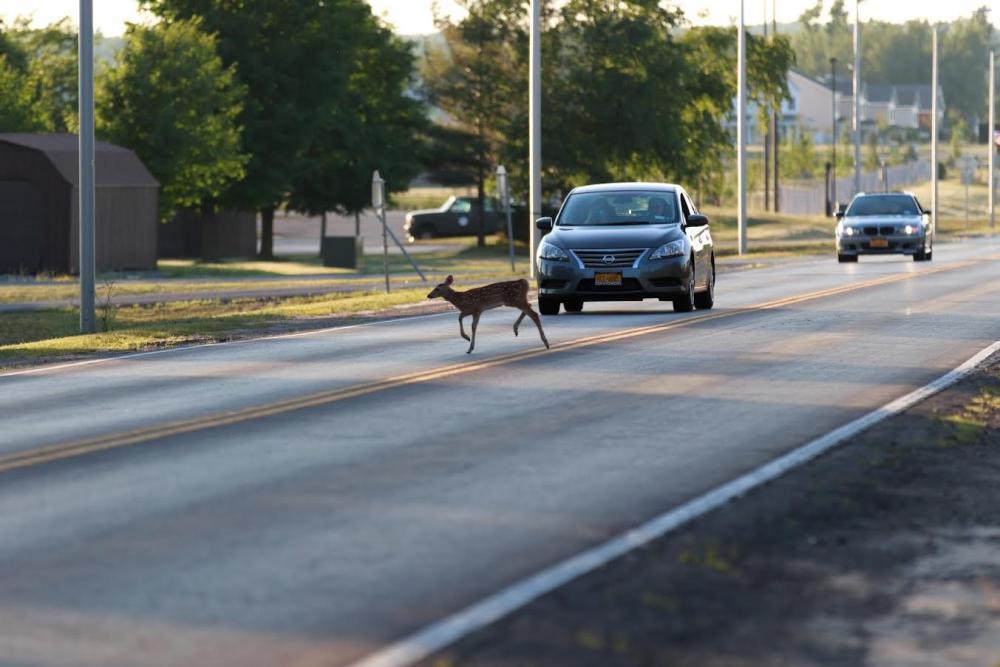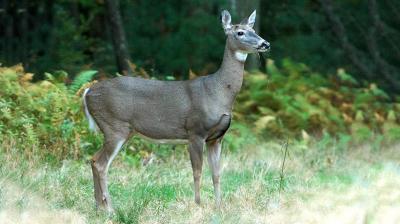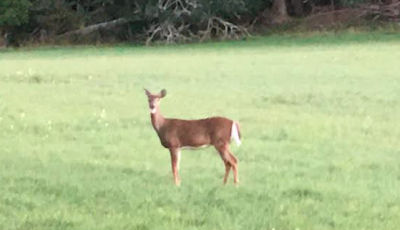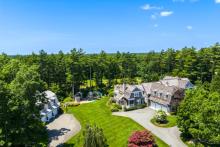Oh, dear: Middleboro tops state for deer strikes
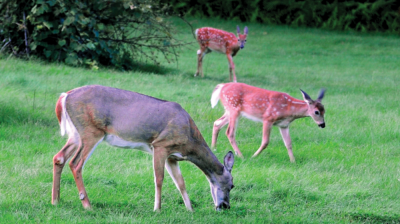
MIDDLEBORO — Deer can be beautiful to watch in fields and on the edges of wooded lots.
But a growing number of deer are being observed where no one wants to encounter them: In the headlights of vehicles.
The resulting crashes can be potentially dangerous to the driver and deadly to the deer.
Middleboro motorists know this all too well.
The town leads the state in the number of collisions reported between deer and vehicles, according to information provided by AAA Northeast.
Thirty-three crashes involving deer were reported in Middleboro from October to December 2021, AAA Northeast reported.
During that same period, 1,656 deer crashes were reported in Massachusetts, the highest number recorded since 2002, AAA Northeast reported.
But those figures can be deceiving, said Martin Feehan, deer and moose project leader for Massachusetts Division of Fisheries & Wildlife. True numbers are likely higher, he said.
The figures reflect only accidents reported to authorities, he said. If a crash results in little to no damage, it may not be officially logged in, he said.
Several factors make Middleboro a top spot for crashes, said Mark Schieldrop, spokesperson for AAA Northeast.
“The landscape is very favorable to deer,’’ he said.
The same geographical features that appeal to people — woods, wetlands and marshe s— also attract deer, Schieldrop said. And Middleboro has its share of all of them.
The town is also home to portions of routes 105, 44, 28 and 495, where deer can graze along the shoulders and cross heavily trafficked areas.
“There’s a lot of traffic, a lot of commuters,’’ he said.
The period from mid-October until early December tends to see large numbers of deer on the move. This is the rutting, or breeding, season, when males pursue females. Bucks chase the does, which in turn run from them, leading to an active, mobile population, Feehan said.
This time also coincides with less daylight, as nightfall sets in earlier when the winter solstice, Dec. 21, nears. Deer can be harder to see in darkened skies.
Being alert to their possible presence is a key to decreasing chances of an accident, Schieldrop said. “Anticipate it, especially this time if year during the rutting season.’’
Speeding drivers worsen the problem, he said. “We see people driving well beyond the speed limit,’’ he said. “The faster you go, the less time you have to react.’’
If drivers see a deer, they should slow down and honk the horn in an effort to scare the animal away, he said.
But, particularly when there is other traffic on the road, Schieldrop stressed trying to avoid the instinct to swerve, which can lead to a more serious collision with trees or other vehicles.
Instead, slow down so that the deer strike, if inevitable, will have the least possible impact.
The rising number of accidents mirrors the increasing numbers of the animals across the state.
Feehan estimates that the state is home to 110,000 deer “at a minimum,’’ and likely more. These numbers have doubled over the past 40 years.
The current population well exceeds numbers when Massachusetts was home to early settlers hundreds of years ago.
One reason for the increase, he said, is the decrease in predators. Where mountain lions, wolves and bears once freely roamed the state and took down deer, now only coyotes tend to attack the animals, and even then, Feehan said, they rarely take down healthy adult deer.
In addition to causing more traffic accidents, the “overabundant deer’’ can harm the ecosystem, Feehan said.
In the woods, deer tend to graze on seedlings, which “stops a new generation of trees.’’ A mix of new and mature trees is ideal for providing habitat for wildlife and plants, Feehan said, but growing deer numbers offset this balance.
One way to decrease the number of deers is to increase the number of antlerless permits, which allow hunters to take female deer. By doing that, he said, the long-term numbers can drop, because does tend to have at least one fawn, and often twins or triplets, each year.
Wildlife officials also encourage more access to hunters, in locations such as conservation areas where deer are plentiful.
But, he acknowledged, not all communities support these options.
Hunters are also encouraged to take additional deer to donate through the state’s Hunters Share the Harvest program. Through this initiative, deer are processed through a company in Hanover. Packaged venison is then distributed to those in need through the Massachusetts Military Support Foundation’s Food 4 Vets program.
As wildlife officials work toward a solution, they urge the public to remember they often share the nighttime road with large, swift-moving animals.
And keep in mind that seeing one deer often means that others are nearby and may behave differently. While one deer may be standing safely from traffic, others could dart out unexpectedly, leading to the possibility of yet another crash.
“Have it in your mind, I might see deer,’’ Schieldrop said.
Because, as the numbers show, that’s a definite possibility along the roads of Middleboro.



